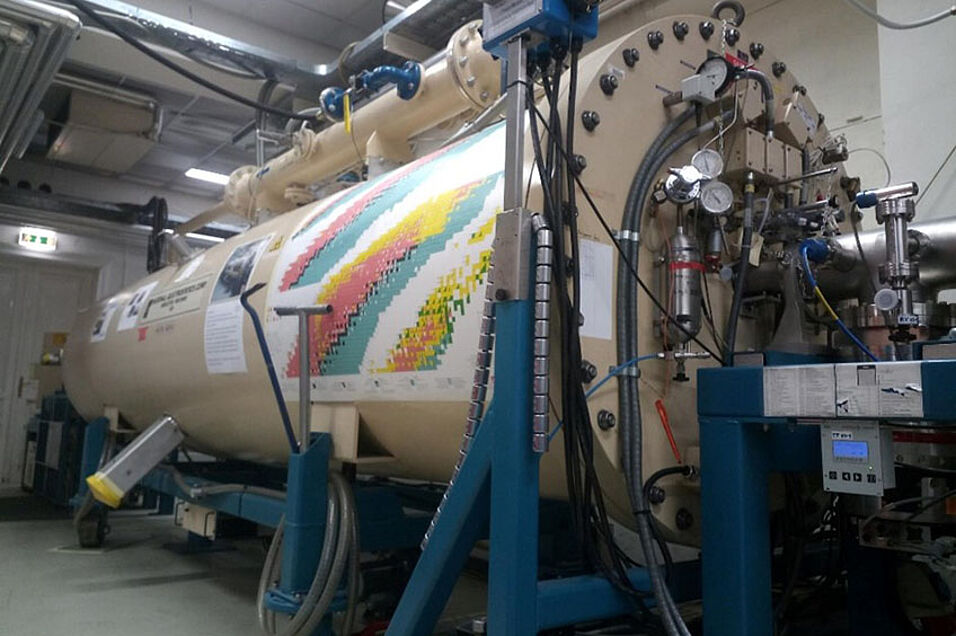One controversial question to date has been how long Lake Neusiedl has existed. Because there was no reliable evidence, estimates ranged from thousands to millions of years. In a joint endeavour, scientists from four Austrian universities have now succeeded in narrowing down the age of Lake Neusiedl to around 25,000 years.
Stephanie Neuhuber from the Institute of Applied Geology at the University of Natural Resources and Life Sciences (BOKU) Vienna, under whose leadership the study was carried out, is surprised by this age, which coincides with the peak of the last ice age, as it was actually particularly dry at that time. The age was determined by radiocarbon dating of carbonate minerals formed in the lake water and deposited in mud on the lake bed.
The contribution of the Isotope Physics group at the University of Vienna was the radiocarbon dating with the particle accelerator VERA of the Faculty of Physics. Due to the special nature of the sample, the method had to be specially developed. In contrast to the usually dated archaeological finds such as wood and bone, the carbonate minerals are tiny grains, the smallest of which were formed only a short geological time ago and the largest of which have grown to their current size over thousands of years. Due to the shallow depth of Lake Neusiedl, wind-driven waves have mixed all the grains. Geologists have methods to sort the grains according to size, but the effort involved only allows very small samples of the individual grain sizes. Peter Steier from the Isotope Physics group has developed radiocarbon methods dedicated for such small samples: "The challenge here is not only to handle these tiny samples without losing them, but also avoiding smallest contaminations, which would completely distort the result. All process steps must be carried out in such a way that no dust or other impurities get into contact with the sample." The highest age was found in sediments near the town of Jois, which are no longer covered with lake water. The lake was obviously much larger back then.
In order to determine a reliable age, a large number of additional measurements were required, which were carried out by all the groups involved. Sediment geological analyses of the lake sediments and palaeohydrological reconstruction of the lake were carried out by Susanne Gier, Patrick Meister and Erich Draganits at the Institute of Geology of the University of Vienna. The interpretation of the data was only possible through interdisciplinary co-operation. In addition to determining the age, it was also possible to gain new insights into the geologically important process of carbonate sediment formation. "As a physicist, I was delighted that we were able to add another piece to Austria's geological history," says Peter Steier.
Original Publication:
S. Neuhuber, S. Gier, E. Draganits, P. Steier, M. Bolka, F. Ottner, C. Spötl, D. Hippler, P. Meister. Radiocarbon ages of microcrystalline authigenic carbonate in Lake Neusiedl (Austria) suggest millennial-scale growth of Mg-calcite and protodolomite. Sedimentology (2024) (doi: 10.1111/sed.13161).

